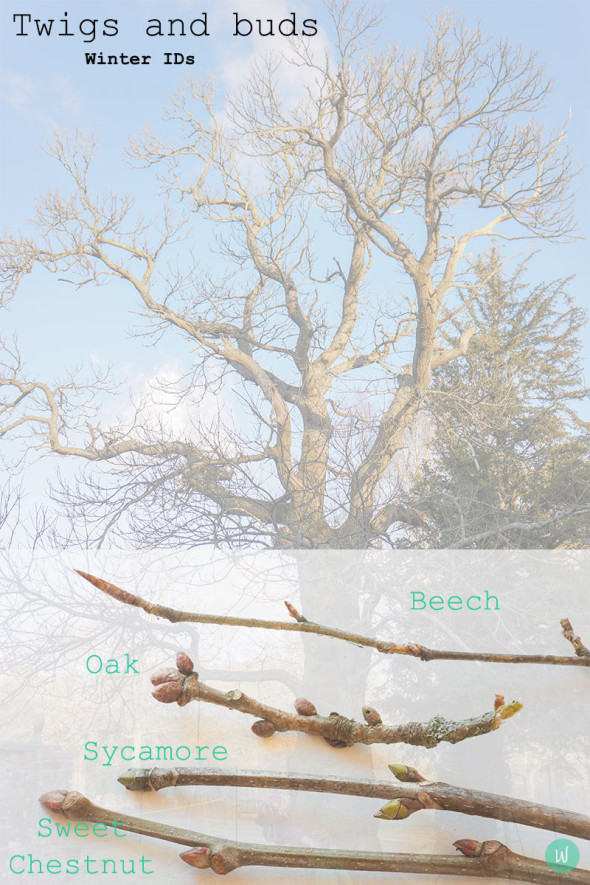 On a recent walk I found myself looking at all the bare winter trees and humming to myself, ‘Who’s that tree? It’s..umm’ (If you’ve watched the TV show ‘Who’s that Girl? you’ll know the tune and words). Without any leaf foliage to help me in the winter I was fairly clueless about identifying way too many trees. But I want Luce and Theo to be able to point at a tree – even in the winter – and say that’s a sweet chestnut instead of ‘what’s that tree?’ …or like me ’who’s that tree?’
On a recent walk I found myself looking at all the bare winter trees and humming to myself, ‘Who’s that tree? It’s..umm’ (If you’ve watched the TV show ‘Who’s that Girl? you’ll know the tune and words). Without any leaf foliage to help me in the winter I was fairly clueless about identifying way too many trees. But I want Luce and Theo to be able to point at a tree – even in the winter – and say that’s a sweet chestnut instead of ‘what’s that tree?’ …or like me ’who’s that tree?’
So I decided we’d go for a wander all together and learn to identify some trees without any leaf clues. Instead, we’d look at the twigs on them and try to figure out what they were by the buds.
Of course I had to turn this winter twigs and bud lesson into an outdoor adventure. My aim was to subtly teach them (and me!) while they had fun. I also didn’t want to overwhelm them so I decided we’d try to only identify four different types of trees during our outing. Now, in case you’ve seen the TV show, and also have the tune in your head (sorry!), I’m going to try and keep it to ‘what’s that tree?’ instead!
What’s that tree? A sweet chestnut.
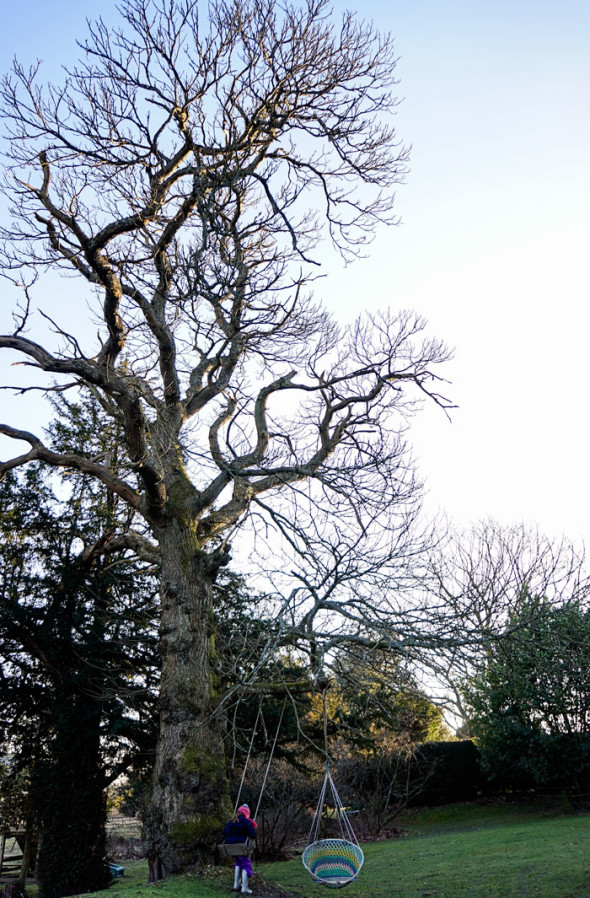 First stop was a tree with their favourite swings. While they took turns in the air, I showed each of them how the sweet chestnut has reddish-brown buds, sort of oval shaped, that alternate along the stem. Other easy clues were that we found seed pods that look like mini hedgehogs on the ground as well as some chestnuts.
First stop was a tree with their favourite swings. While they took turns in the air, I showed each of them how the sweet chestnut has reddish-brown buds, sort of oval shaped, that alternate along the stem. Other easy clues were that we found seed pods that look like mini hedgehogs on the ground as well as some chestnuts.
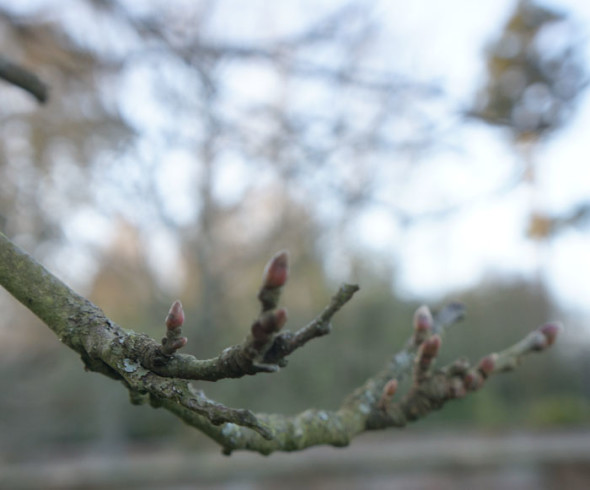
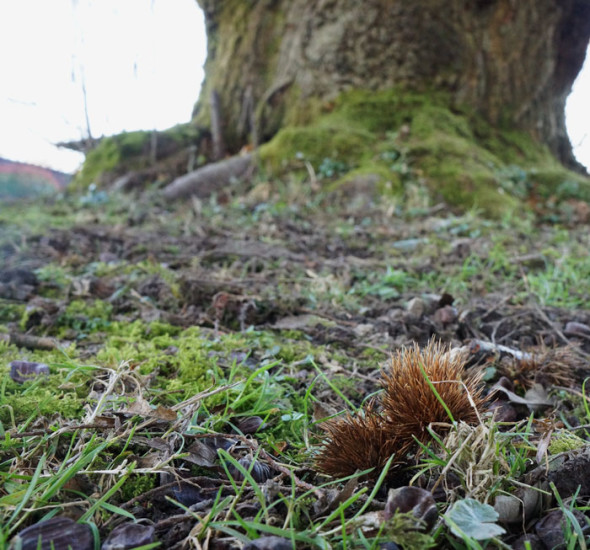
I also had to explain that the sweet chestnut is not the same as the horse chestnut. Not only are the seed pods different but you can safely cook and eat sweet chestnuts. Conkers from horse chestnuts are great for games but toxic to eat.
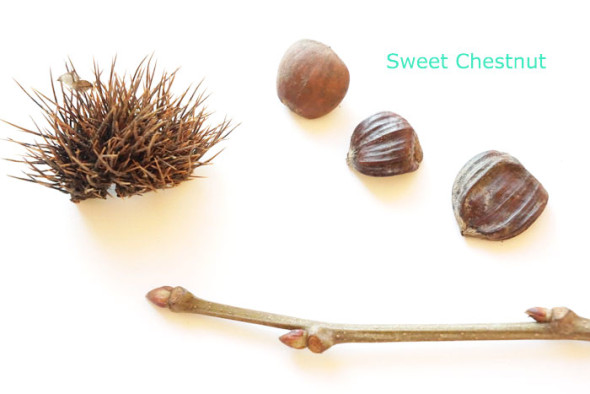
Luce took a selfie with the sweet chestnut before we headed to our next destination.
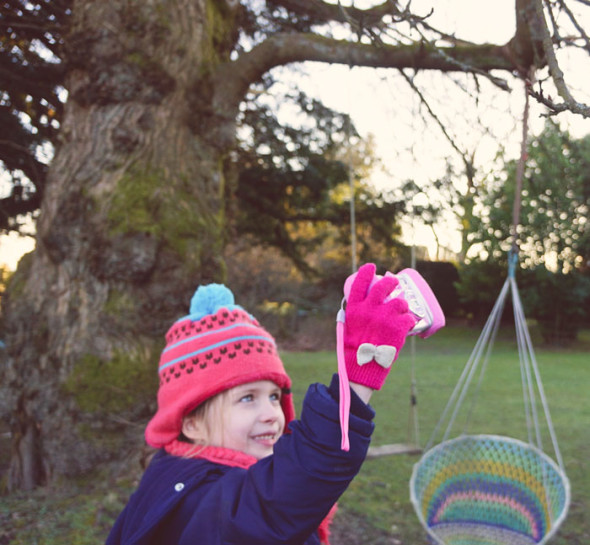
What’s that tree? A sycamore (Acer pseudoplatanus)
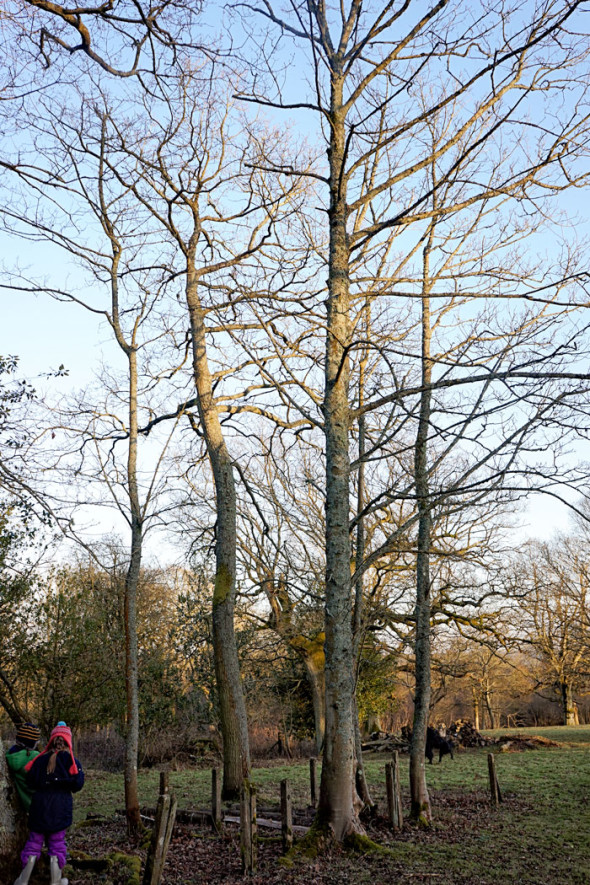 The sycamore trees didn’t hold my children’s attention very long as they couldn’t see any climbing potential. The bark was too smooth and the branches out of their reach. We did find some lower twigs with the distinctive green egg-shaped buds which grow in opposite pairs up it.
The sycamore trees didn’t hold my children’s attention very long as they couldn’t see any climbing potential. The bark was too smooth and the branches out of their reach. We did find some lower twigs with the distinctive green egg-shaped buds which grow in opposite pairs up it.
UPDATE BRITAIN VS USA SYCAMORES: This tree Iin my post – Acer pseudoplatanus – is known as a sycamore in Britain and Ireland and is not the same as the North American sycamore – Platanus occidentalis. One of the differences between them is that the Acer pseudoplatanus (known as sycamore in Britain and sycamore maple in USA) has buds and leaves arranged as opposite pairs unlike the Platanus occidentalis (known as sycamore in USA and plane tree in Britain) which has alternate ones.
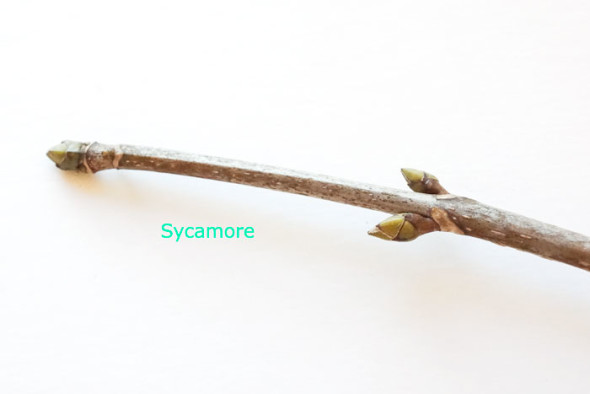
What’s that tree? An oak
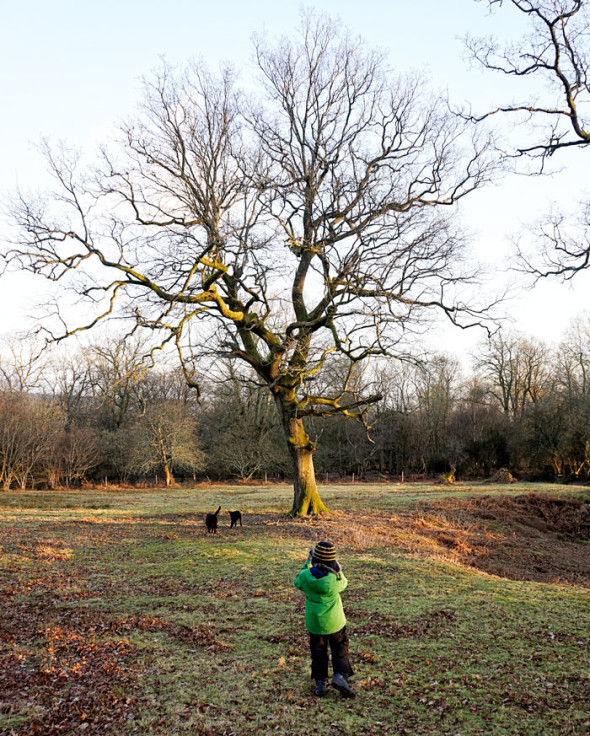 Luce and Theo had brought along their cameras so took some photos of oaks spread across a field. They were English( pedunculated) oaks. The buds on the oaks are pretty easy to recognise as they are orange-brown and grow in bunches at the tips of the twigs.
Luce and Theo had brought along their cameras so took some photos of oaks spread across a field. They were English( pedunculated) oaks. The buds on the oaks are pretty easy to recognise as they are orange-brown and grow in bunches at the tips of the twigs.
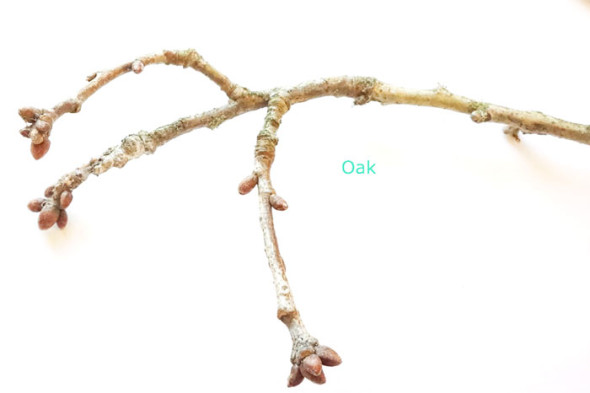 Off into the woods we went.
Off into the woods we went.
What’s that tree? A beech
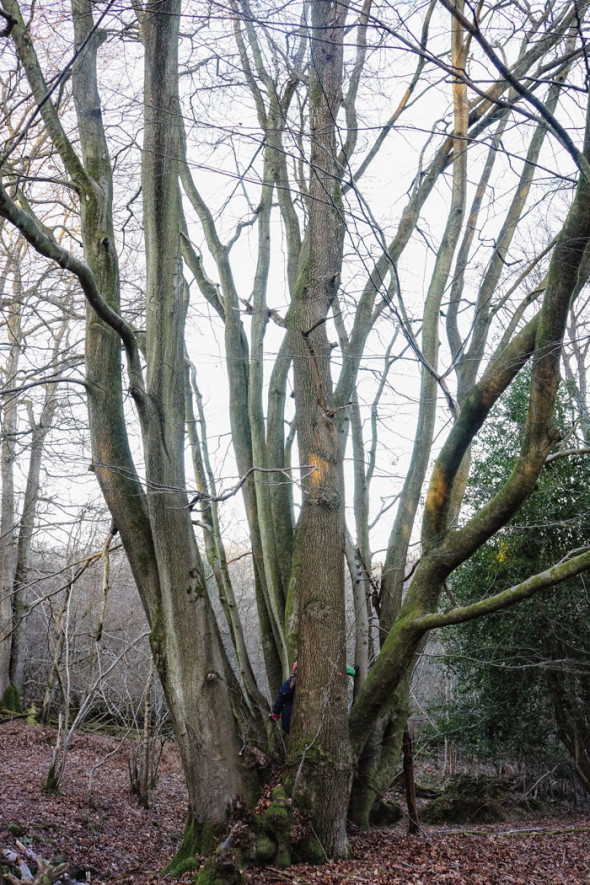 Luce and Theo then headed for the perfect climbing frame – a cluster of beeches that had grown and twisted together.
Luce and Theo then headed for the perfect climbing frame – a cluster of beeches that had grown and twisted together.
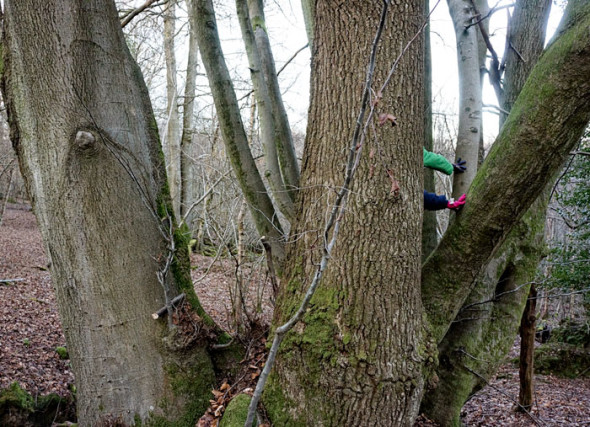 It looked like there was an oak that had also clung to this group as it’s rough bark contrasted with the smoother grey of the beech.
It looked like there was an oak that had also clung to this group as it’s rough bark contrasted with the smoother grey of the beech.
The main ‘climbing frame’ was beech because its twigs had long pointed coppery buds zigzagged along them.
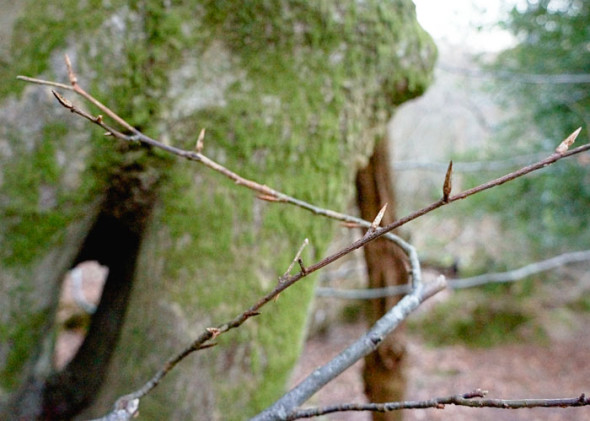
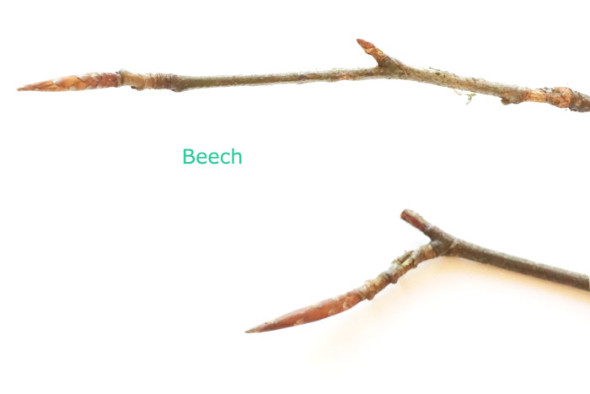 Luce and Theo didn’t want to leave our last stop as they were having too much fun climbing, clambering and checking out all the holes and nooks and crannies.
Luce and Theo didn’t want to leave our last stop as they were having too much fun climbing, clambering and checking out all the holes and nooks and crannies.
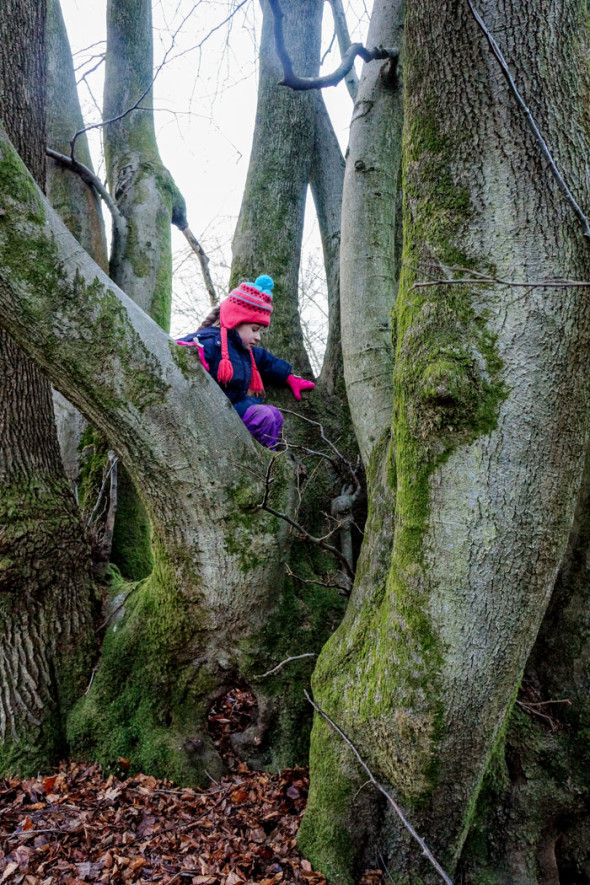
But the sun had begun its descent and it was time to head back.
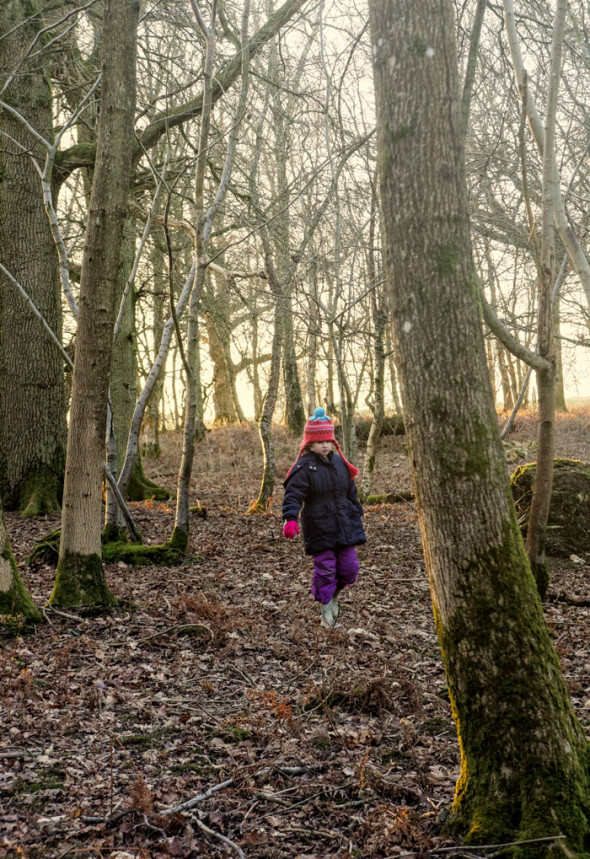
Free printable spotter sheet with twigs and buds winter ids
>>>I brought samples back home and made a winter twigs and buds id spotter sheet which you can download here:Twigs and Buds Winter IDs <<<<
(note – the guide refers to the Acer pseudoplatanus tree known as a sycamore in Britain and a sycamore maple in USA. This is different from the North American Platanus occidentalis known as a sycamore in the USA)
My kids were very keen on each having their own copy of the spotter sheet after I promised them a small treat if they could identify correctly the names of the twigs this weekend. Four trees was a good start as I think it’s better they slowly learn to spot and recognize trees in the winter rather than giving them an information overload. Trees provide them with an awful lot of fun – even in the winter – so they at least should start learning these friends’ names. And, personally, I’m looking forward to my next walk when I can stop, examine the twigs and buds and sing ‘Who’s that tree? It’s oak…or sycamore…or sweet chestnut…or beech.

Just a friendly FYI, your sycamore twig is not a sycamore. I’m thinking it’s a maple of some kind (Norway?). The leaf (and therefore bud) arrangement on a sycamore is alternate, and the base of the petiole completely surrounds the bud, so the leaf scar will be in a circle all the way around the bud.
The twig IS a sycamore twig in Britain although it’s known as a sycamore maple in the USA The twig/tree guide in my post is based on trees here in the UK. The Acer pseudoplatanus is called Sycamore in Britain and Ireland whereas in the US it’s known as a sycamore maple. The North American sycamore is a Platanus occidentalis. One of the differences between the Acer pseudoplatanus and Platanus genus is the leaf insertion. The sycamore in this post (Acer pseudoplatanus) are arranged in opposite pairs with egg-shaped buds unlike the American sycamore (Platanus occidentalis) which are alternate.
This is wonderful – such a great idea to get the kids out and about in winter, and identifying the trees, and having so much fun at the same time as well. Thanks so much for taking part in the Parenting Pin it Party.
Well, I think you have answered the question ‘which tree is best to climb?’ as well as ‘who’s that tree?’. What fun 🙂
#countrykids
This is brilliant Kriss, I am useless at identifying trees, I’ll be printing this to do with the boys 🙂
What a fantastic post and great lesson. I have to admit I didn’t know how to tell which was which from the bare branches so this has been useful to me too.
Thanks! I too had no idea until we started looking at the twigs and buds 🙂
Pingback: Who’s that tree? (Plus winter twigs and buds printable) | LAB
I love this post! Just printed off the sheet, thank you so much for doing this. I am fairly useless at recognising trees and my three are always asking what’s that tree?! So important to give them as much knowledge as possible about the world around them. Lovely post x
Thanks for educating me about sticks. We will use this the next time we go into the forest. 🙂
What a brilliant idea. I would have no idea when it comes to identifying trees without leaves on – struggle enough when it’s summer time with some #CountryKids
I always wanted to know their names! Its so frustrating that I only call them tree really. This is really amazing! Though I think I need to print those twigs and go out before I can really tell which is which =) #countrykids
Thanks Merlinda!
Such a great idea Kriss. I need to brush up on my tree identification-considering how much I love them my knowledge is terrible 🙂
Thanks Iona – I feel the same way 🙂
This is such a brilliant idea. I am hopeless at recognising trees. This sounds like something me and the girls could try one weekend
Thanks darren! Hehe I liked learning with my kids as I’m hopeless too – especially in the winter.
What a perfect time of year for this activity, no leaves to give the game away but each with their different twigs, branches and buds. Great idea for an adventure, I must say I love roasted sweet chestnuts and we always go hunting for them in autumn. thank you for sharing your educational walk on Country Kids.
To me bark all looks to similar in winter and this just was such an easy way to finally identify the trees. We’re going to have to try some sweet chestnut recipes next Autumn!
This is so educational! Thanks for the reference guide 🙂 we’ll use it this weekend to spot and identify some bare trees. Our favourite are Beech. They are great to climb 🙂 #CountryKids
Glad you liked it! Learning and climbing at same time is great combo!